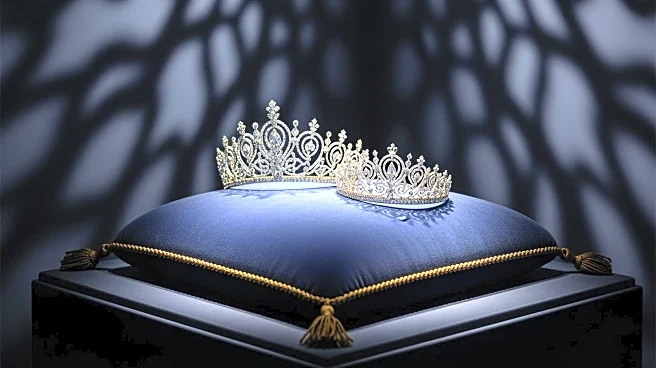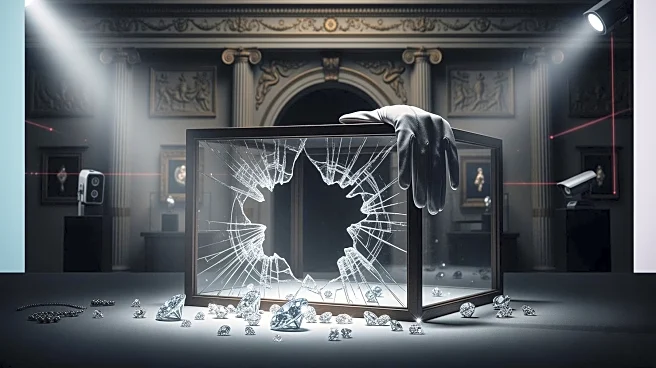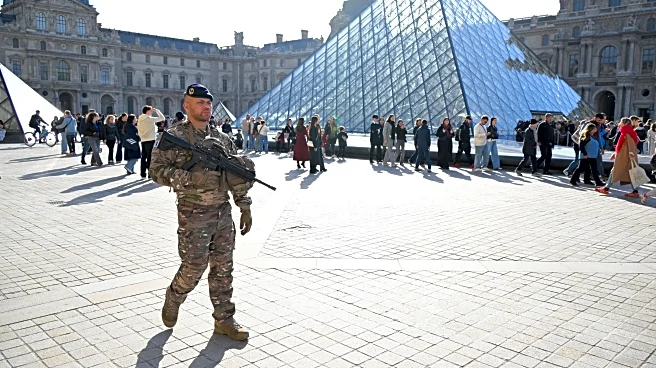What's Happening?
The Paris prosecutor has identified the suspects involved in the Louvre Museum heist as local petty criminals rather than organized crime professionals. The theft, which occurred on October 19, involved the stealing
of jewels worth €88 million from the museum. Four individuals have been arrested and charged, including a 37-year-old man and a 38-year-old woman, who are believed to be in a relationship. The suspects, who reside in the impoverished area of Seine-Saint-Denis, have denied involvement in the heist. The stolen jewels, including a tiara worn by Empress Eugenie, have not been recovered.
Why It's Important?
The identification of the Louvre heist suspects as local criminals rather than organized crime figures challenges assumptions about the nature of high-profile art thefts. This revelation has significant implications for security strategies at cultural institutions, highlighting the need for comprehensive measures that address a wide range of potential threats. The theft of such valuable artifacts represents a substantial cultural and financial loss, emphasizing the importance of protecting national heritage. The case has drawn international attention, putting pressure on French authorities to enhance security protocols and prevent future incidents.
What's Next?
The investigation is ongoing, with authorities focused on recovering the stolen jewels and apprehending any remaining suspects. The Louvre Museum and other cultural institutions may implement stricter security measures to prevent similar incidents in the future. The public and international community will be closely monitoring the developments in this high-profile case, which has significant implications for the protection of cultural assets worldwide. The outcome of this case may lead to significant changes in how cultural institutions secure their valuable collections.












